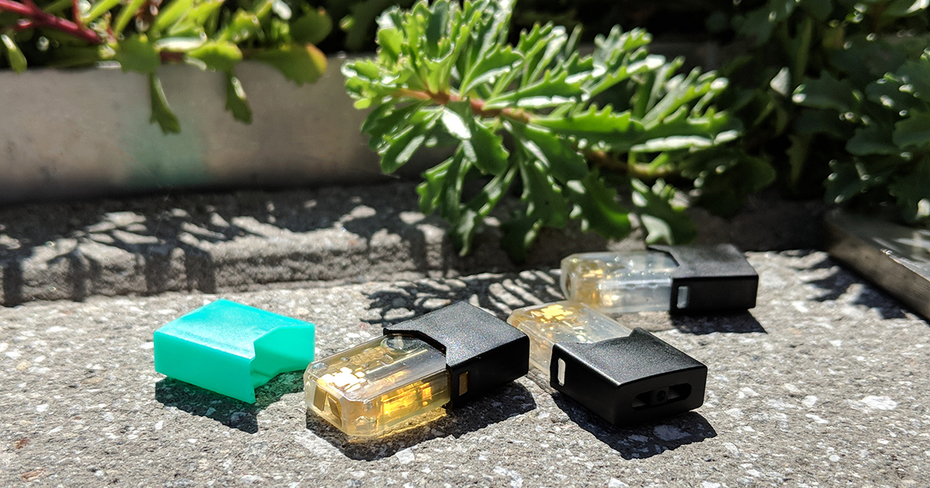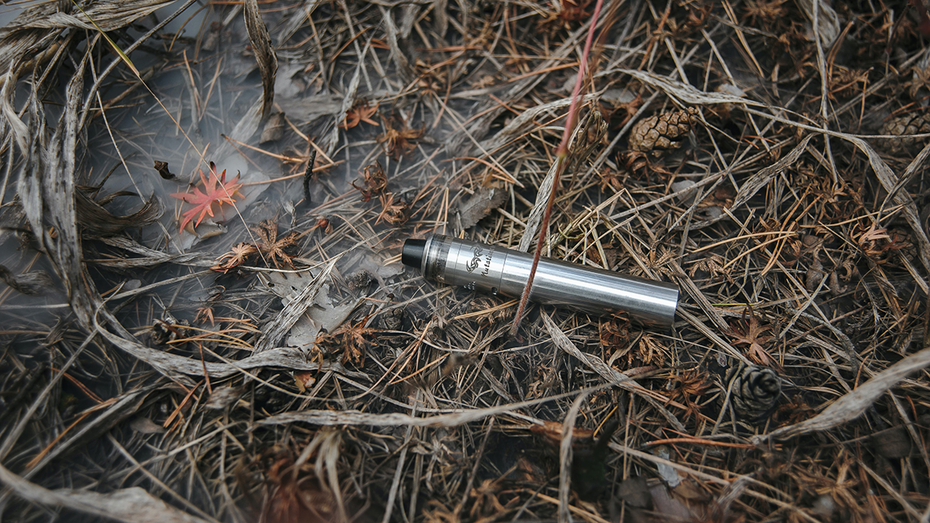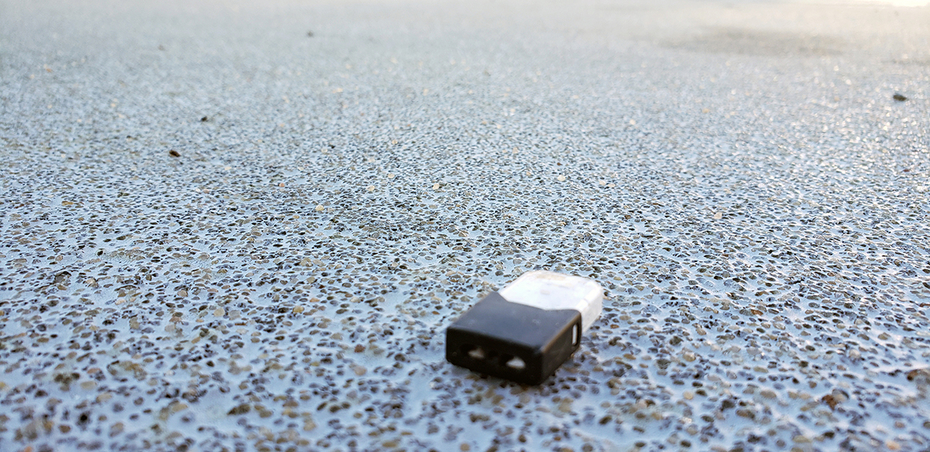A toxic, plastic problem: E-cigarette waste and the environment
Vaping, still at epidemic levels among youth with about one in five high school students using e-cigarettes in 2020, generates a significant amount of toxic and plastic waste. Many popular e-cigarettes, like JUUL, are pod-based with single-use plastic cartridges containing nicotine. Generating even more waste are disposable e-cigarettes like Puff Bar, which are designed entirely for one-time use and have skyrocketed in popularity with a 1,000% increase in use among high school students between 2019 and 2020.
With a 399.73% increase in retail e-cigarette sales (excluding internet sales and tobacco-specialty stores) from 2015 through 2020, the environmental consequences of e-cigarette waste are enormous. Instead of taking responsibility for the disposal of their products, tobacco companies engage in clean-up initiatives designed to make them appear “green” — just one of many tactics designed to overhaul their reputations (read the Truth Initiative report “Seeing Through Big Tobacco’s Spin”).

Almost half (49.1%) of young people don’t know what to do with used e-cigarette pods and disposable devices.
More than half (51%) of young e-cigarette users reported disposing of used e-cigarette pods or empty disposables in the trash, 17% in a regular recycling bin not designed for e-cigarette waste, and 10% reported they simply throw them on the ground, according to Truth Initiative research conducted in 2020. Almost half (49.1%) of young people don’t know what to do with used e-cigarette pods and disposable devices.
Their actions should come as no surprise as e-cigarette manufacturers fail to provide consumers with guidance or take responsibility for appropriate disposal methods. In a separate study conducted by Truth Initiative in 2019, almost half (46.9%) of e-cigarette device owners said that the e-cigarette device they used currently did not provide any disposal information, such as where to send used batteries or empty pods. Additionally, when e-cigarette device owners were asked about e-cigarette waste disposal, the majority (73.7%) believed that it was difficult to find e-cigarette drop off sites.
How e-cigarette waste hurts the environment
E-cigarettes not only pose substantial health risks to youth and young adults, they pose a significant environmental threat (see the Truth Initiative fact sheet on Tobacco and the Environment).
E-cigarette waste is potentially a more serious environmental threat than cigarette butts since e-cigarettes introduce plastic, nicotine salts, heavy metals, lead, mercury, and flammable lithium-ion batteries into waterways, soil, and to wildlife.
Unlike cigarette butts, e-cigarette waste won’t biodegrade even under severe conditions. E-cigarettes left on the street eventually break down into microplastics and chemicals that flow into the storm drains to pollute our waterways and wildlife.
DISPOSING OF USED E-CIGARETTES AND ACCESSORIES
How do you recycle a JUUL
Many young e-cigarette users reported throwing away, improperly recycling, or littering the devices. Only 15% of young e-cigarette users reported disposing of empty pods or disposable vapes by dropping them off or sending them for electronic recycling.
According to a survey conducted from February to June 2020, e-cigarette users reported how they disposed of empty pods, disposable e-cigarettes, batteries or other vape pieces:
- More than half of respondents (51%) said that they throw empty pods or empty disposable vapes in the regular trash
- 17% of young people disposed of empty pods and disposable vapes by putting them in regular recycling not designed for e-cigarette waste
- 10% disposed of used pods or disposable vapes by littering on the ground.
Respondents also reported keeping or selling the devices, or returning them to a vape shop.
YOUNG PEOPLE UNDERSTAND THE NEGATIVE ENVIRONMENTAL IMPACT OF E-CIGARETTE WASTE
Are e-cigarettes bad for the environtment
In a separate study conducted in October 2019, researchers found that young people clearly understand that e-cigarette waste is bad for the environment. The majority of respondents between 15-34 recognized that empty e-cigarettes, pods, cartridges and refills are litter (86.9%) and that e-cigarettes are not biodegradable (65.7%). They also recognized the danger of throwing e-cigarette waste in the trash (75.8%). Most respondents acknowledged that e-cigarettes and related materials contain substances that are toxic to humans (84.1%) and harmful to animals (89.8%)
Young respondents clearly recognized the dangers of e-cigarette waste to humans and the environment and want an appropriate method to recycle. Of the 544 young people who owned e-cigarette devices, 75.7% said that they considered recycling e-cigarettes.
E-CIGARETTE USERS THEMSELVES ARE LESS AWARE OF ENVIRONMENTAL IMPACT OF LITTERING
Is JUUL bad for the environment
Even though the majority of survey participants knew about the dangers to the environment presented by e-cigarettes, those who had vaped at least once were significantly less informed about the environmental impact of littering e-cigarettes than those who had never vaped. The 966 respondents who had never vaped more often believed that e-cigarette waste was dangerous to throw in trash compared to the 1,083 respondents who had vaped at least once (81.4% vs. 71%). Fewer of those who had vaped at least once (79.3%) believed that e-cigarettes contained toxic substances compared to those who had never vaped (89.6%).
MANY UNAWARE OF HOW TO BEST DISPOSE OF E-CIGARETTE WASTE
How do you dispose of a JUUL
Many of those who vape were likely to report issues that kept them from being able to safely dispose of their used and empty e-cigarette products. Of e-cigarette device owners, the majority (73.7%) believed that it was difficult to find e-cigarette drop off sites and almost half (46.9%) said that the e-cigarette device they used currently did not provide any disposal information such as where to send used batteries or empty pods. More than half (57.8%) of those who had used e-cigarettes in the past month found it inconvenient to dispose of e-cigarette waste responsibly.
How to safely dispose of e-cigarettes
Safely disposing of e-cigarettes involves handling the batteries and e-cigarettes appropriately. To dispose of e-cigarettes:
- local waste departments about their household hazardous waste (HHW) program to see if they accept e-cigarettes.
- If HHW is not an option, remove the battery (if possible) and bring the battery to recycling. After the battery has been removed, bring the rest of the e-cigarette to DEA take-back days (see: E-CIGARETTE MANUFACTURERS FAIL TO PROVIDE USERS’ DISPOSAL INFORMATION).
E-CIGARETTE MANUFACTURERS FAIL TO PROVIDE USERS’ DISPOSAL INFORMATION
Can you throw away a JUUL in the trash
E-cigarette manufacturers introduced a new tobacco product that soared in popularity with little thought on how to responsibly dispose of the resulting tons of e-cigarette waste. Unlike other electronics, e-cigarette manufacturers do not provide consumers with clear instructions on how to properly handle e-cigarette waste once the e-cigarette or its accessories reaches the “end of life.” They leave the onus of figuring out how to safely dispose of e-cigarettes to the consumer.
Currently, there is no standardized way to recycle e-cigarettes in the U.S. Starting in 2019, the Drug Enforcement Agency (DEA) began accepting e-cigarette devices and cartridges during their annual National Prescription Take Back Day, although the DEA cannot accept devices containing lithium ion batteries. There are also no documented baseline standards for end-of-life disposal by manufacturers, and no requirement in place to hold manufacturers accountable for the post-consumer waste they helped produce or to devise a clear and safe system to dispose of these items as hazardous materials or electronic waste. Guidance exists on best practices on this concept of accountability — known as end-producer responsibility — but isn’t enforced across the industry by any governing body.

Unlike other electronics, e-cigarette manufacturers do not provide consumers with clear instructions on how to properly handle e-cigarette waste once the e-cigarette or its accessories reaches the “end of life.”
PR INSTEAD OF PROBLEM-SOLVING
Can you throw away an e-cigarette
Instead of accepting responsibility for their product, tobacco companies are using the environmental problems associated with tobacco products as a ploy for positive press attention. Some tobacco companies have included reducing the amount of cigarette butts in the environment as part of their sustainability goals. For example, American Spirit continues its “inspirational” themed environmental messaging in 2021 with a new “Stronger Together” slogan that describes American Spirit and their fans as “stronger together” when working to protect the environment and reaffirms their goal to help recycle a half-billion cigarette butts by 2025. Philip Morris International (PMI) — the makers of Marlboro — claims it wants to reduce plastic litter from its products by 50% from 2021 to 2025 as part of its “Our World Is Not an Ashtray” initiative. Notwithstanding that filters — which are made of plastic — make it easier to smoke, to inhale more deeply, and convince smokers that they are using a “safer” cigarette when in fact smoking filtered cigarettes provides no health protection and may lead to an increased risk of adenocarcinoma of the lung.
PMI also touts clean-up efforts but these efforts barely make a dent in the vast amounts of tobacco litter, given that with up to two-thirds of every smoked cigarette discarded onto the ground, 340 and 680 million kilograms of waste tobacco product litter the world each year. The sheer volume of e-cigarette waste that is created in a year can be estimated by looking at national sales data. Data collected by the CDC Foundation capturing units of e-cigarette sales per month between 2016-2020 showed over 201 million new devices in the US in 2020. Because proper disposal of components and hazardous waste is not easily accessible to the average consumer, this could potentially translate into 201 million pieces of plastic, aluminum, lithium ion, and packaging that ends up in landfill as a result. But more importantly, campaigns like “Our World is Not an Ashtray” are hypocritical at best and deeply misleading to the public. The tobacco industry not only created this new waste stream in the first place, they seem to be trying to cover-up their harmful practices through misdirection and public displays of eco-activism.
ADDRESSING E-CIGARETTE WASTE POLLUTION
E-cigarette pollution
There is an urgent, overdue need for standardized processes for the disposal of e-cigarette devices, refills and e-liquids. Waste management and hazardous waste disposal plants are not currently equipped to handle e-cigarette waste and federal regulations still have not caught up to the need for guidance on disposal of these types of small electronics containing toxic waste. Federal, state, and/or local governments need to set clear standards on environmentally responsible e-cigarette waste disposal and hold the industry accountable for adhering to them.

There is an urgent, overdue need for standardized processes for the disposal of e-cigarette devices, refills and e-liquids.
NEED FOR INDUSTRY ACCOUNTABILITY
What is being done about e-cigarette pollution
- The tobacco industry must accept responsibility for e-cigarette waste. The tobacco industry is responsible for producing much more than tobacco products — they are guilty of creating hundreds of thousands of pounds of e-cigarette waste, which presents serious threats to the ecosystem and require a long-term solution. The tobacco industry needs to facilitate the environmentally safe disposal of their products.
- Public awareness of hypocritical tobacco company-sponsored “clean-ups.” The public needs to know that green initiatives sponsored by the tobacco industry are a smokescreen to distract from culpability for creating tobacco waste in the first place.
- E-cigarette manufacturers need to better inform e-cigarette users of the environmental impact of littering e-cigarettes, since those who had vaped at least once were less aware of the environmental impact of littering e-cigarettes compared to those who had never vaped.
Increasing consumer awareness of the environmental toxicity and dangers posed by discarding e-cigarette waste into landfills and encouraging vapers to quit are the best ways to protect the environment from tobacco product waste.
SURVEY METHODOLOGIES
E-cigarette Brand Tracking Survey (October 2019): Truth Initiative conducted a survey on e-cigarette littering awareness and intentions of 2,049 youth and young adults (age 15-34) to better understand perceptions of environmental impact of e-cigarette waste. Survey respondents included non-smokers, smokers of traditional tobacco products, as well as e-cigarette users.
Media Monitoring Survey (February – June 2020): Truth Initiative collected data on e-cigarette disposal methods over a 17-week period from 3,757 youth and young adults (age 15-24). The survey included a section on e-cigarette waste disposal knowledge and beliefs.
More in harmful effects of tobacco
Want support quitting? Join EX Program
By clicking JOIN, you agree to the Terms, Text Message Terms and Privacy Policy.
Msg&Data rates may apply; msgs are automated.




